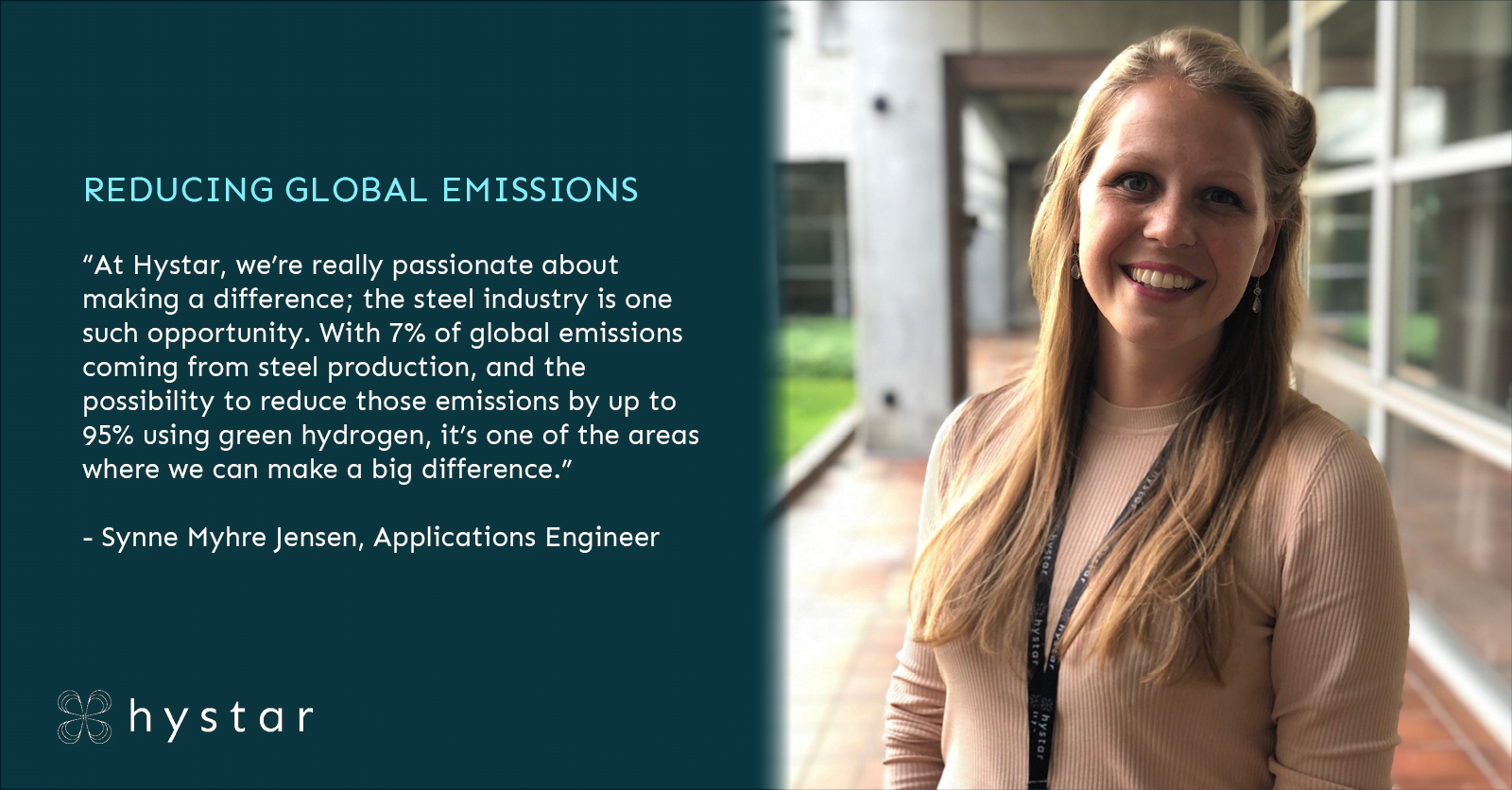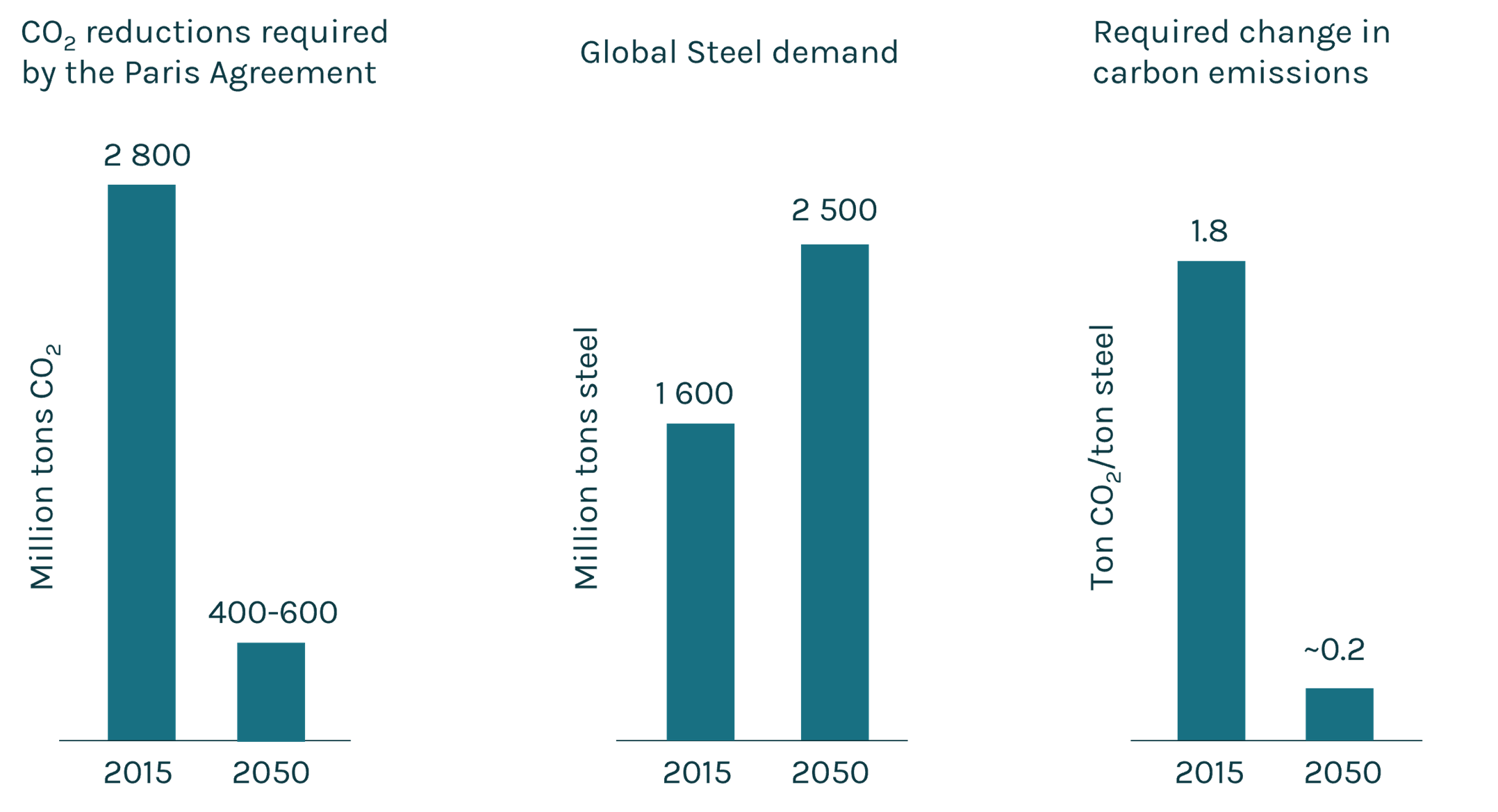🇳🇴 The future of green steel production via electrolysis
By Leila Asdal Danielsen, Hystar
NORWAY — It is no longer up for debate that the world needs to undergo an energy transition. What IS still in question, however, is how we get there and what should be prioritized. In Hystar, we believe that green hydrogen has a central role to play, particularly when it comes to hard-to-abate sectors such as steel production. Taking a deeper dive into this, Applications Engineer Synne Myhre Jensen has written a white paper on the future of green steel production using electrolysis. Here are some of the highlights…
Steel production today is primarily based on using coke in blast furnaces to reduce iron from ore. This is further made into steel, producing intense CO2 emissions. Did you know that the steel industry currently accounts for up to 7% of the world’s greenhouse gas (GHG) emissions? If numbers are your thing, you can think of it in another way: the emissions from steel production are equivalent to the annual CO2 emissions from about 590,000,000 average gasoline cars.
It’s not all bad news, though. A 90-95% reduction in those emissions is possible through the use of green hydrogen. Even better, the technology to produce green hydrogen for use in green steel production is already available today. However, in order to scale up to the needed capacity, serious investments are required.

As one of the one of the most important materials in the world today, decarbonizing steel production should clearly be a priority. Green hydrogen is an acknowledged solution to the need for lowering the industry’s emissions (see the references noted in the white paper), for production of new (primary) steel. The demand for steel is expected to grow significantly (see the graph below), meaning the urgency to find a solution for producing primary steel without emissions grows. If we want to meet the CO2 reduction targets of the Paris Agreement, we need find ways to implement the solutions already available to reduce emissions from the steel industry.
FURTHER READING
• 🇸🇪 🇫🇮 H2 Green Steel has entered into a long-term frame agreement with Fortum for electricity supply
• 🇸🇪 SSAB launches new zero-emission steel – SSAB Zero™
• 🇫🇮 🇸🇪 Finland and Sweden to be built into a single hydrogen economy
• 🇨🇦 EverWind Fuels Receives Environmental Approval for First Industrial-Scale Green Hydrogen and Green Ammonia Project in North America
• 🇸🇪 🇫🇮 From vision to action : Six partners have signed a cooperation agreement to develop Nordic-Baltic hydrogen corridor
We go into detail on the options for green hydrogen use in the production of steel in the white paper, which you can download from the link below.

It’s now established that green hydrogen has a key role to play in decarbonizing the steel industry. So, what is holding us back? In short, access to affordable renewable energy and green hydrogen.
Renewable electricity is required both to produce the green hydrogen as well as to power the facilities where the steel is being produced. It’s also in high demand for other applications. While installations for renewable energy production are rapidly increasing, the demand still currently exceeds what’s available. This is an area where Hystar’s technology can make a difference. Hystar has two electrolyser systems: VegaTM and MiraTM. Our Vega electrolyser system is specifically optimized for industrial use and requires significantly less energy input than other PEM electrolysers, maximizing the renewable electricity usage. Learn more about Hystar’s Vega electrolyser here.
When it comes to green hydrogen production, a significant scale-up within the electrolysis industry is needed. There currently isn’t enough electrolyser capacity to produce the necessary green hydrogen to meet the steel industry’s needs. Here, too, Hystar has an advantage. Our Mira electrolyser system is a perfect combination with electricity from intermittent sources such as wind and solar, with an increased production rate of up to 150% rate compared to other electrolysers. Learn more about Hystar’s Mira electrolyser here.
There are certainly some transitional barriers that need to be overcome in order to ensure that green steel production becomes the primary source of steel globally. However, the opportunities are there and Hystar is ready to support the industry in acting on them!
Learn more about green steel production from our white paper:
Download ‘Green steel production’ white paper
This article was produced by Hystar.
To join the Arctic Business Journal network as a content partner, contact us at pa**********@ar**************.com.
This article has been fact-checked by Arctic Business Journal and Polar Research and Policy Initiative, with the support of the EMIF managed by the Calouste Gulbenkian Foundation.
Disclaimer: The sole responsibility for any content supported by the European Media and Information Fund lies with the author(s) and it may not necessarily reflect the positions of the EMIF and the Fund Partners, the Calouste Gulbenkian Foundation and the European University Institute.

